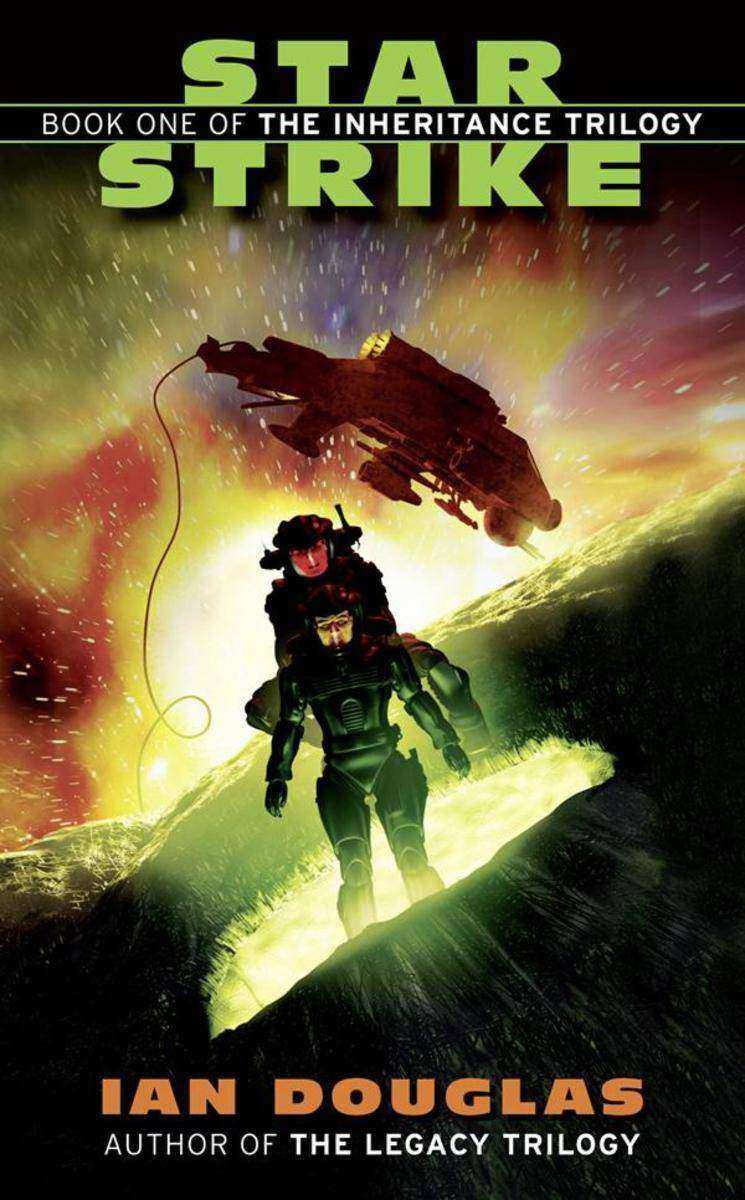
Scrabble Secrets (Collins Little Books)
¥44.05
Inside this little book lie the secrets of Britain’s only ever Scrabble World Champion.

One Summer’s Afternoon:A perfect summer treat!
¥34.14
This is no ordinary cricket match. This is the Swell Valley One Day Match… More exclusive than the Buckingham Palace Summer Garden Party, and more star-studded than Cartier Polo, the annual Fittlescombe vs Brockhurst cricket match is older than the Ashes, and every bit as hotly contested. The Fittlescombe team have their hopes pinned on local boy Will Nuttley, but 24 year-old Will has his heart set on winning back the love of his life, Emma Harwich. As the champagne goes on ice and the sandwiches are being cut, little do the Swell Valley residents know that Emma has got wind of Brockhurst’s newly arrived ‘secret weapon’, the Argentine heartthrob Santiago de la Cruz. She’s intent on sleeping with the enemy, and it’s throwing Will into a spin…

The Steel Bonnets
¥114.48
From the author of the famous ‘Flashman Papers’ and the ‘Private McAuslan’ stories.

The Wedding Diaries
¥34.14
The first novel in an entertaining and hilarious new series introduces Kiki Carlow, a woman on a mission to create her perfect wedding. Kiki Carlow is shocked but delighted when boyfriend Thom proposes. Planning a wedding is easy, right? That’s as long as you ignore: 1. The utterly bankrupting price of the only dress you’ll ever truly love. 2. Your suddenly pregnant sister – surprise! 3. The celebrity wedding you’re covering for work which is devouring your every waking thought. 4. The Mother of the Bride. Entirely. Kiki soon discovers that planning the perfect wedding might just bring total chaos to the rest of her life. Can she stop being a Bridezilla in time to marry the man she loves? Heart-warming and hilarious, The Wedding Diaries will make you laugh, cry, and want to watch Bridesmaids all over again…

Birds of South America:Passerines (Collins Field Guide)
¥294.79
Recommended for viewing on a colour tablet. South America has long been known for its bountiful flora and fauna. The richness in bird life has attracted visitors from all over the world and has helped to make South America an increasingly popular wildlife tourist spot. This major new field guide to the birds of South America covers all the passerines (perching birds), with all plumages for each species illustrated, including males, females and juveniles. The text gives information on key identification features, habitat, and songs and calls. Beautiful artwork featured across 195 colour plates appears opposite the relevant text for quick and easy reference. Distribution maps are included, showing where each species can be found and how common it is, to further aid identification.

Chocolate Shoes and Wedding Blues
¥34.14
When Tansy Poole inherits a run-down shoe shop tucked away in the village of Sticklepond, ‘Cinderella’s Slippers’ is born – providing the footwear to make any fairytale wedding come true… Carrying everything a bride would want to walk down the aisle in, Tansy’s shop soon expands to carry shoe-themed wedding favours, bridesmaid gifts and even delicious chocolate shoes. It’s the dream destination for any shoe-lover! If only everything in her personal life could be as heavenly – but with a fiancé trying to make her fit into a size 8 wedding dress, not to mention the recent discovery of disturbing family revelations, Tansy takes refuge in the shop’s success. But one man isn’t thrilled by the stream of customers hot-footing it to Cinderella’s Slippers… Actor Ivo Hawksley, resident of the cottage next to the shop, is troubled by a dark secret in his past and has come to Sticklepond to nurse his own broken heart. However, Ivo realises that he and Tansy have a link in their past and soon, they both find out how secrets shared can make a very strong bond indeed… Forget the Jimmy Choos, Chocolate Shoes and Wedding Blues is the only accessory you need for spring 2012…

Pedigree Mum
¥34.14
The e-book bestselling author, Fiona Gibson is back. Laugh-out-loud funny from the author that bought you Mum On The Run. Fiona’s writing deals with the real life cringe-worthy moments we all know so well… A straying husband. A broken heart. And a crazy rescue dog in a town of posh pooches… When Kerry Tambini upped sticks with her family to a new home on the coast, she couldn’t have been happier. Then husband Rob made the biggest mistake of his life… Stranded with her children in snooty Shorling, Kerry has plenty on her plate. So how can she say no to the kids' pleas for a dog when they're missing their father dreadfully? Will adopting a wayward hound lead Kerry to a new love – or has she bitten off more than she can chew? As she steps back into the dating world Kerry must juggle her family, her neurotic dog and try to fit in with the local pedigree mums, making her a true heroine for our time.

DOG Is GOD Spelt Backwards:Bonnie
¥15.60
An inspiring and heart-warming short story of canine devotion and bravery. When Corporal Jenny Chester was matched with Arms and Explosives search dog Bonnie it felt like the best Christmas present ever. Friends from day one, partners beyond doubt, through service in Bosnia and Iraq they shared food on the run, sleeping in bags in the cold and shade of the same tree. A bond made in wartime that created a partnership for life. Extracted from the bestselling title The Dog That Saved My Life.

Fearless Under Fire:Tangye
¥15.60
An inspiring and heart-warming short story of canine devotion and bravery. A brave and loyal companion to the British soldiers in conflict in Afghanistan, Tangye began his years as a puppy mascot. Before long he was inseparable from the servicemen on the base, who he lived and patrolled with for five years. He accompanied the bomb disposal unit several times and became a target for the enemy. But he was also a much loved companion for soldiers in the time of need. Extracted from the bestselling title Beyond The Call Of Duty, this is the story of dog who was a resident comedian and constant comforter, and the fight of the men he accompanied to bring him back with them to the UK.

Dreaming of Elisabeth:A Short Story
¥22.66
A short story from No. 1 international bestseller and Swedish crime sensation Camilla Lackberg, perfect for fans of Stieg Larsson and Jo Nesbo. Malin and Lars have embarked on an epic sailing trip. But during the trip Malin starts to have strange dreams about Lars’ ex-girlfriend, Elisabeth. As his behaviour becomes increasingly erratic, Malin becomes convinced that Lars is responsible for the death of his ex. Trapped on a boat with nowhere to go, Malin fears he is next on the list…

Treachery
¥61.51
Perfect for fans of C.J. Sansom and The Name of the Rose, the fourth historical thriller featuring Giordano Bruno, heretic, philosopher and spy. August, 1585. England is on the brink of war… Sir Francis Drake is preparing to launch a daring expedition against the Spanish when a murder aboard his ship changes everything. A relentless enemy. A treacherous conspiracy. Giordano Bruno agrees to hunt the killer down, only to find that more than one deadly plot is brewing in Plymouth’s murky underworld. And as he tracks a murderer through its dangerous streets, he uncovers a conspiracy that threatens the future of England itself.

Brothers of the Head
¥28.06
Sci-fi legend Brian Aldiss’ dark and compelling story of Siamese twin boys with a third dormant head. Tom and Barry are Siamese twins with a third head growing out of Barry’s shoulder. They are plucked from their deprived home by showbiz entrepreneurs and form a rock band, The Bang Bang. But the twins have a violent relationship and jealousies arise over their shared lover. Can a band split up when the singers are permanently joined together?

The Brightfount Diaries
¥34.14
Aldiss’ first novel republished after many years out of print. In a small provincial city, Peter lives with his long-suffering Aunt Anne and his eccentric Uncle Leo, and works in a bookshop called Brightfount’s, which he describes as a ‘shabby outpost of literacy’. Cutting the apron strings, he moves into a bed-sit and composes these witty diaries, in which he includes amusing remarks about publishers, authors, booksellers and customers, a revelation about his dotty uncle, and his efforts to find a suitable girl. First published as a weekly serial in The Bookseller, these fictional diaries became a sensation, prompting fanmail from across the globe and resulting in the author’s first book deal.

The Complete Short Stories:The 1960s (Part 1)
¥81.03
Following on from the 1950s collection, this is the second collection of Brian Aldiss’ short stories, taken from the 1960s. A must-have for collectors. Part one of four. This collection gathers together, for the very first time, Brian Aldiss’ complete catalogue of short stories from the 1960s, in four parts.

The Malacia Tapestry (The Brian Aldiss Collection)
¥73.58
In Malacia, a city where change is forbidden and radical ideas are crushed, a war like no other is about to commence. The Brian Aldiss collection includes over 50 books and spans the author’s entire career, from his debut in 1955 to his more recent work. Struggling young actor Perian de Chirolo does as he pleases in the timeless city. He is a lover, a fighter and has no thought for consequence, until the magic of Malacia changes and reality begins to catch up with him. Now de Chirolo must make a choice between his old life, and joining the revolutionaries who will fight to ensure Malacia is never the same again.

Sleeping With Ghosts
¥53.76
A blockbuster novel of suspense, intrigue and revenge, from the celebrated author of Platinum Coast and Eclipse Kathryn de Moubray comes from a respectable English family. So when she discovers that her grandfather was a high-ranking Nazi and wanted war criminal who disappeared in 1944, she is devastated – and compelled to trace the family history that her mother, now dead, kept hidden for so many years. Adam Krantz, a New York art dealer whose family was wiped out in the Holocaust, is on a mission to find their legacy: an exquisite collection of paintings which vanished at the same time as Kathryn’s grandfather. Adam is convinced that the two are connected. They meet in St Lucia, and again in London when a priceless painting turns up mysteriously, amidst a storm of controversy. Despite the bitterness and betrayal of the past, the attraction between them grows stronger. But will it unite them or drive them apart as they unravel the extraordinary events that took place in wartime Berlin more than fifty years ago?

My Fair Man
¥46.11
A modern Pygmalion story with a twist, by the bestselling author of STEPFORD HUSBANDS. Hattie George is a woman with a mission. A dedicated socialist, she wants to make the world a better place. Teased by her friends, especially her best friend’s boyfriend, Jon, she bets that she can transform Jimmy, a young Geordie who lives on the streets and sells the Big Issue, into a drop-dead gorgeous, man-about-town – in just a few weeks. With his taste for brown sauce and brown ale, and his very different table manners, Jimmy will never turn the heads of the chattering classes or change Jon’s cynicism. Or will he? As Hattie’s mission is launched, there is more than one transformation taking place, resulting in chaos, hilarity, heartbreak and misunderstanding. Just who is trying to impress who? MY FAIR MAN is a modern fairy tale and a witty portrayal of men, women and contemporary society, in which Jane Gordon explores with humour, sympathy and incisiveness the important issues of gender, class, and different people’s motivations.

Dark Matter (Star Carrier, Book 5)
¥69.26
The fifth book in the epic saga of humankind's war of transcendence… An enemy might just have to become an ally . . . in order to save humankind The United States of North America is now engaged in a civil war with the Earth Confederation, which wants to yield to the demands of the alien Sh'daar, limit human technology, and become a part of the Sh'daar Galactic Collective. USNA President Koenig believes that surrendering to the Sh'daar will ultimately doom humankind. But when highly advanced, seemingly godlike aliens appear through an artificial wormhole in the Omega Centauri Cluster 16,000 light years from Earth, President Koenig is faced with a tremendous choice: continue fighting the Sh'daar . . . or ally with them against the newcomers in a final war that will settle the fate of more than one universe.

Star Strike (The Inheritance Trilogy, Book 1)
¥45.22
Planet by planet, galaxy by galaxy, the inhabited universe has fallen to the alien Xul… Now only one obstacle stands between them and total domination: the warriors of a resilient race the world-devourers nearly annihilated centuries ago . . . A power vast, ancient, and terrifying, the mighty Xul have lost track of the insignificant humans hundreds of years after devastating their home world—which has enabled the United Star Marines to operate unnoticed and unhindered. A near-autonomous intergalactic policing force, they battle in defense of an Earth they may not live to see again. Now, following the trail of a vanished twenty-fourth-century transport, they are journeying through an unexplored stargate to the edge of an unknown galaxy many light years from their sun. For the last, best, and only chance to defeat the tyrants of the universe may at long last be at hand . . .

The Cracking Code Book
¥53.56
How to make it, break it, hack it, crack it. The secret history of codes and code breaking. Simon Singh’s best-selling title The Code Book now re-issued for the young-adult market. The Science of Secrecy from Ancient Egypt to Quantum Cryptography. Simon Singh brings life to an amazing story of puzzles, codes, languages and riddles – revealing the continual pursuit to disguise and uncover, and to work out the secret languages of others. Codes have influenced events throughout history, both in the stories of those who make them and those who break them. The betrayal of Mary Queen of Scots and the cracking of the enigma code that helped the Allies in World War II are major episodes in a continuing history of cryptography. In addition to stories of intrigue and warfare, Simon Singh also investigates other codes, the unravelling of genes and the rediscovery of ancient languages and most tantalisingly, the Beale ciphers, an unbroken code that could hold the key to a $20 million treasure.

Collins Where to See Wildlife in Britain and Ireland
¥147.35
Have you ever wondered where the best places to go are to see leaping salmon, rutting deer, diving gannets, breaching whales or bluebell woods in full bloom? The British Isles are home to some of the richest and most varied wildlife to be found in Europe, and knowing when and where to go is the key to seeing Britain’s natural beauty at its very best. Divided into 50 regions, each accompanied by a detailed map, Where to See Wildlife in Britain and Ireland is packed with essential information on Britain and Ireland’s most exciting conservation sites, from nature reserves in Somerset renowned for their otters, to remote bird sanctuaries in the Highlands of Scotland, home to the glorious golden eagle. Featuring over 800 sites, including National and Local Nature Reserves, National Parks, RSPB Reserves, Sites of Special Scientific Interest, and Areas of Outstanding Natural Beauty, this highly informative book provides practical advice on the best time to go, how to get there, and what to see, along with suggestions for other places to visit in each area. Plants and animals associated with each site are highlighted throughout, and special features provide insight into the range of habitats you will encounter along the way, from marshes and wetlands to lakes and mountains. With over 500 stunning colour photographs and clear Collins road mapping, Where to See Wildlife in Britain and Ireland allows nature-lovers to plan anything from a fun day out for the family to a two–week tour of Britain’s wildlife treasures. So whether you want to see glow-worms glow in Devon, hares box in Hertfordshire, or sea eagles soar over Skye, this book will get you to the right place at the right time, helping to answer many of your questions along the way.




 购物车
购物车 个人中心
个人中心



